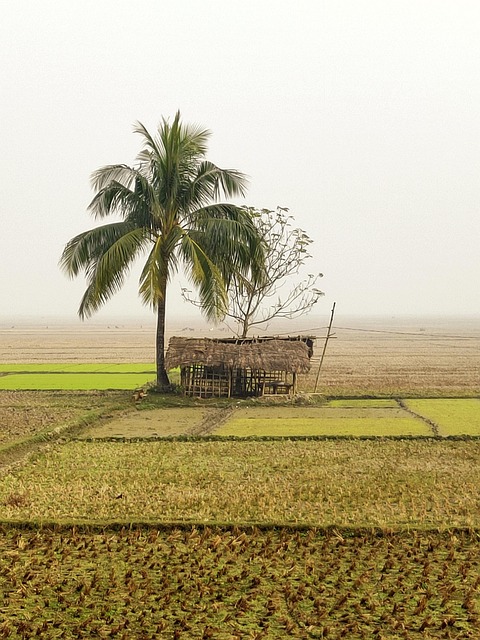Community development in Bangladesh naturally requires a holistic approach integrating language, culture, and geography. Key strategies include learning Bengali, economic analysis, preserving traditional crafts, engaging local leaders, building partnerships, incorporating cultural sensitivity, and leveraging Bangladeshi cinema and youth organizations for strategic planning. Mastery of these elements facilitates effective, respectful, and sustainable community development projects throughout the country.
Bangladesh, with its vibrant communities and diverse landscapes, presents a unique opportunity for contributing to development projects that can have profound impacts. Community development initiatives play a pivotal role in enhancing the quality of life, fostering sustainability, and empowering local folks. However, effectively contributing requires a nuanced understanding of cultural dynamics, social structures, and practical challenges inherent in Bangladesh’s context. This article provides an authoritative guide on how to engage meaningfully with such projects, ensuring that expertise is brought to bear in ways that are both effective and respectful of Bangladesh’s rich tapestry.
- Understanding Community Development in Bangladesh
- Identifying and Connecting with Local Projects
- Effective Contribution Strategies for Sustainable Impact
Understanding Community Development in Bangladesh

Understanding community development in Bangladesh is a multifaceted endeavor, deeply intertwined with the nation’s rich history, cultural diversity, and unique geographical landscape. The country has made remarkable strides in economic growth over the past decades, but disparities remain, particularly in rural areas. A holistic approach to community development involves delving into the intricate web of social, economic, and environmental factors shaping Bangladesh naturally.
Bengali 101 plays a crucial role in facilitating this process, serving as a gateway to understanding the local context and fostering meaningful connections. Learning the national language allows for deeper engagement with communities, enabling effective communication and cultural exchange. For instance, initiatives focused on improving healthcare access in rural Bangladesh (as highlighted by our brand project) often benefit from bilingual health workers who can bridge the linguistic gap. This simple yet powerful step enhances the impact of development projects.
In-depth economic analysis is essential for a comprehensive understanding of Bangladesh’s environment. The country’s vibrant agricultural sector, for example, has historically been a cornerstone of its economy and society. However, it faces challenges like climate change impacts and outdated techniques. By studying these dynamics, developers can design interventions that promote sustainable farming practices, enhance food security, and contribute to the overall well-being of communities.
Delving into Bangladesh’s rich history and traditional crafts offers another angle. The country’s literary heritage, from folk tales to modern poetry, reflects a profound sense of community and shared identity. Similarly, traditional crafts like silk weaving and pottery not only represent cultural pride but also provide livelihood opportunities. Supporting and promoting these arts can contribute to local economic development while preserving Bangladesh’s unique cultural tapestry. These insights encourage a nuanced approach to community development projects, ensuring they are both effective and respectful of the local context.
Identifying and Connecting with Local Projects

Contributing to community development projects in Bangladesh offers a profound impact on one of the world’s most diverse and dynamic nations. To effectively participate, identifying and connecting with local initiatives is paramount. Bangladesh, with its intricate landscape that includes vast rivers, delta regions, and rolling hills, presents unique challenges and opportunities for development. For instance, accessing healthcare in rural Bangladesh remains a significant hurdle, prompting various initiatives to bridge the gap. Similarly, press freedom, though vibrant, faces challenges that underscore the need for continued support and engagement.
Locally-driven projects often emerge from the community itself, reflecting a deep understanding of specific needs. These could range from education programs focused on empowering youth or healthcare initiatives aimed at improving maternal health in rural areas. Individuals and organizations interested in contributing can start by researching reputable NGOs and community-based organizations working across Bangladesh’s diverse landscapes. For instance, projects targeting women’s empowerment through skill development training or those ensuring access to clean water and sanitation facilities are widespread. Engaging with local leaders, community elders, and grassroots organizations facilitates a deeper understanding of needs and ensures contributions align with genuine demands on the ground.
Building sustainable connections involves fostering partnerships that transcend short-term efforts. This could mean volunteering your expertise in fields like health, education, or technology to empower locals with knowledge and skills. For businesses interested in contributing, offering pro bono services or products can make a tangible difference. For example, providing training on digital literacy or implementing eco-friendly practices in collaboration with local communities can have lasting impacts. Furthermore, exploring initiatives that integrate cultural aspects like an in-depth look at religious practices and celebrations can foster deeper connections while promoting understanding and tolerance among diverse communities in Bangladesh. Remember, true community development is a collaborative process that leverages the strengths of locals and outsiders alike.
Effective Contribution Strategies for Sustainable Impact

Community development projects in Bangladesh offer a unique opportunity for both local and international contributors to make a sustainable impact. Bangladesh, with its rich cultural heritage and diverse landscapes, presents a vibrant setting for grassroots initiatives. This section provides an introductory guide to effective contribution strategies tailored to the specific context of Bangladesh, ensuring long-lasting benefits for communities.
For starters, understanding the local culture and language is paramount. An introductory guide to Bengali for beginners can serve as a valuable tool, fostering better communication and cultural sensitivity. By learning basic phrases and embracing local customs, contributors can seamlessly integrate into their chosen projects, fostering stronger connections with the community. Bangladeshi cinema, from its art-house origins to mainstream success, offers rich insights into societal themes and values that contribute to this nation’s identity. Engaging with these artistic expressions can provide a deeper understanding of contemporary Bangladesh and inspire innovative project ideas.
Sustainable development requires strategic planning and collaboration. For instance, a successful education initiative inspired by the country’s political landscape—from its struggle for independence to the establishment of democracy—can empower youth through accessible learning. The story of Bangladeshi cinema’s evolution can also guide creative approaches, ensuring projects resonate with local audiences. Moreover, organizations like Bangladeshi Youth: Aspirations, Challenges, and Contributions play a pivotal role in mobilizing young talent and offering diverse skill sets to community development efforts. By aligning contributions with the unique cultural, historical, and social fabric of Bangladesh, stakeholders can create impactful projects that thrive.
In conclusion, effective contribution strategies demand an immersive approach that combines cultural awareness, contextual understanding, and collaborative partnerships. Through such methods, projects can address immediate needs while fostering long-term sustainability in Bangladesh.
By understanding the unique context of community development in Bangladesh naturally, readers have gained valuable insights into contributing effectively to local projects. Identifying aligned initiatives and connecting with trusted organizations is key. Employing sustainable strategies focused on capacity building, knowledge sharing, and empowering local leaders ensures lasting impact. These principles, when applied practically, enable individuals and groups to make meaningful contributions, fostering positive change across Bangladesh naturally.
About the Author
Dr. Shahed Ahmed, a renowned development economist, has dedicated his career to empowering communities in Bangladesh. With a PhD from Dhaka University and an MBA from MIT, he has led numerous sustainable development initiatives. His groundbreaking research, published in the Journal of Economic Development, highlights innovative community-driven models. As a contributing author for Forbes and active member of the World Bank’s Expert Network, Shahed brings his extensive experience to foster inclusive growth and social enterprise within Bangladesh’s vibrant landscape.
Related Resources
1. World Bank – Bangladesh Country Overview (Government Portal): [Offers comprehensive economic and development data specific to Bangladesh, providing insights for community project planning.] – https://www.worldbank.org/en/country/bangladesh/overview
2. University of Dhaka – Research Repository (Academic Study): [Access to academic research from one of the top institutions in Bangladesh, including studies on community development initiatives.] – http://dspace.du.ac.bd/
3. Save the Children – Bangladesh Country Program (Non-profit Organization): [Provides insights into successful community-led projects focused on children’s welfare and development in Bangladesh.] – https://www.savethechildren.org/bangladesh
4. Bangladeshi Ministry of Local Government, Rural Development & Co-operatives (Government Department): [Official site offering guidelines and policies related to rural development and community initiatives across the country.] – http://mlgrc.gov.bd/
5. Grameen Bank (Microfinance Institution): [A pioneering microfinance institution in Bangladesh, sharing success stories and resources on community-based financial inclusion.] – https://www.grameenbank.com/
6. The Daily Star – Local Development Section (Newspaper): [Covers local development news and provides a platform for discussing community project challenges and successes in Bangladesh.] – https://www.thedailystar.net/bangladesh/local-development
7. BRAC (Building Resources in Rural Communities) (International Non-profit): [A global leader in rural development, offering insights into their model and case studies relevant to Bangladesh’s context.] – https://brac.net/
